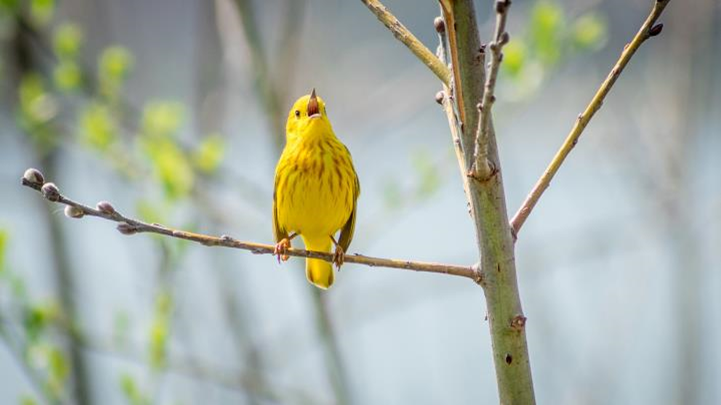Setophaga petechia

It’s not easy to stand out in a group that contains more than 50 species, but the Yellow Warbler does it with bold, bright colour and a song of sweet-sweet-sweet-I’m so sweet.
Habitat
Look for Yellow Warblers among willows and other shrubs along streams and the borders of wetlands. You’ll find them across almost all of North America in summer. Winter takes them to Mexico, Central America, the Caribbean, and northern South America.
Food
Yellow Warblers eat insects like beetles, caterpillars, and midges.
Behaviour
On breeding grounds, the female builds a nest in the fork of a shrub that’s made of grasses, bark strips, and plant fibers. The inside is lined with deer hair, feathers, and plant fluff. Anywhere from 1 to 7 eggs are laid. Brown-headed Cowbirds, who don’t make nests, often lay their eggs in Yellow Warbler nests. If one is found, the warblers build a new nest on top. Adults hunt among branches, picking insects as they move, seemingly in constant motion.
Conservation
Yellow Warblers are common across their vast range. They have experienced some decline but are a species of low conservation concern. One of their main threats is during migration. Like the many other birds that migrate at night, they are killed in collisions with towers and tall buildings, attracted by their lights.

